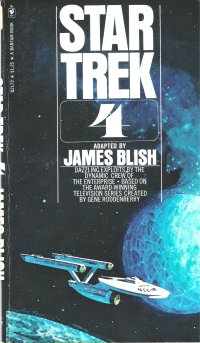 As I mentioned when I recently went over Star Trek 3 that Blish, in his introduction, talks about how they decide which Star Trek episodes to include in each volume–basically, they’re going on fan requests, volume thereof. By the time this book comes out (1971), Star Trek has been off the air for a couple of years–by the time this printing occurs, it’s longer still (and man is about to or has just landed on another piece of the solar system for the last time). So they must have known or thought this might be a phenomenon. Whether they could even conceive then that it would lead to multiple television series and movie reboots fifty years later…. You know, probably not. That’s a long time in the future from 1971.
As I mentioned when I recently went over Star Trek 3 that Blish, in his introduction, talks about how they decide which Star Trek episodes to include in each volume–basically, they’re going on fan requests, volume thereof. By the time this book comes out (1971), Star Trek has been off the air for a couple of years–by the time this printing occurs, it’s longer still (and man is about to or has just landed on another piece of the solar system for the last time). So they must have known or thought this might be a phenomenon. Whether they could even conceive then that it would lead to multiple television series and movie reboots fifty years later…. You know, probably not. That’s a long time in the future from 1971.
At any rate, this book collects some more episodes I remember. Previously, I called these iconic, but basically, it’s episodes I remember. Perhaps they’re iconic. Perhaps I just watched Star Trek a lot. I mean, I remember watching it on the little color television in my mother’s bedroom in the house down the gravel road in 1988 or so. Why was I watching it there? The 25″ television was in the living room. Perhaps the smaller television had better antennae, or perhaps I was grounded.
The episodes within include:
- “All Our Yesterdays”, the one where they go back in time. Well, separately–Kirk, Spock, and McCoy get beamed to a planet where the population has all beamed into the past to avoid a catastrophe. A “librarian” still manning the device thinks the Enterprise team are stragglers, and he beams them into two different eras of the past separately–so the Enterprise crew needs to get themselves back to the present time.
- “The Devil in the Dark”, the one with the Horta, with which Spock mind-melds and cries, “Pain! Pain!”
- “Journey to Babel”, the one with Spock’s parents. Also, a plot, and Spock has to save Sarek.
- “The Menagerie”, the one with Captain Pike. Originally shot as the show’s pilot, it was later aired with a framing story–the retelling here leaves out the framing story of Spock mutining to take the disabled Captain Pike back to the planet of the illusionists.
- “The Enterprise Incident”, the one where the Enterprise enters Romulan space, and Kirk goes on trial for espionage.
- “A Piece of the Action”, the one where Kirk and the Enterprise crew act like mobsters. Not a time travel episode as one would expect–they just visit a planet whose cultural development was based on a mob history from an Earth ship’s crash.
So I’m not remembering these episodes quite as clearly, but it’s been thirty years since I have watched Star Trek.
The books have made me want to acquire Star Trek on physical media. I know I’ve seen videocassettes of the series at a local thrift store. Last week, I hit the local antique mall with my Christmas gift certificates (which I can only use until June since they have six month expiration dates), and one of the things I had my eyes out for was such videocassettes. I thought I hit pay dirt at one booth with a shelf of 20 or 30 videocassettes, but they were Star Trek: The Next Generation. As I have the first two seasons on DVD, I was surprised to see that Paramount sold TNG two episodes to a VHS tape–it must have been early in the show’s run. So no Star Trek for my video shelves at this time, which is just as well as I have only watched a couple episodes of the first season of The Twilight Zone on the DVD set that I got not long after reading The Twilight Zone Encyclopedia.
Also, I should note that the next couple of books–Star Trek 5-7, Star Trek 9-10–I have read relatively recently (2005), so my remembering the episodes might just as well be my remembering reading the stories. Although, as I mentioned, I read a great number of these books in middle school or high school, so one cannot expect any of them to be truly green field. Although they are quick enough reads.



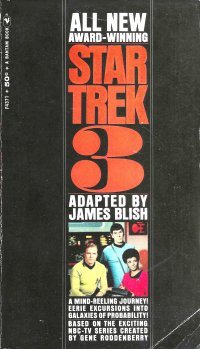 As I mentioned, I’m going to plow through the James Blish adaptations of Star Trek short storizations this year since I apparently have them all (and two of some of the later ones). (See also
As I mentioned, I’m going to plow through the James Blish adaptations of Star Trek short storizations this year since I apparently have them all (and two of some of the later ones). (See also 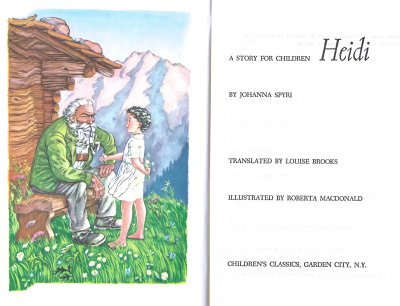 I know, I know, I know; a couple weeks ago, I posted that
I know, I know, I know; a couple weeks ago, I posted that 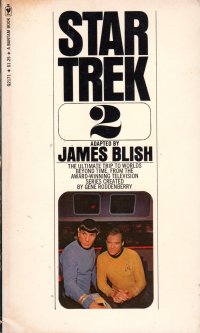 I picked up the
I picked up the 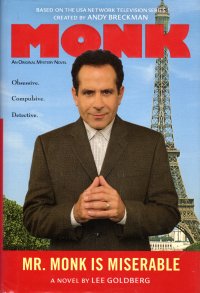 Well, the
Well, the 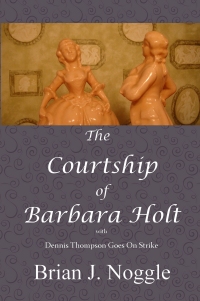
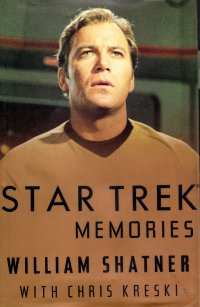 To be honest, when I finished
To be honest, when I finished 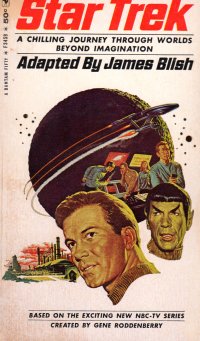 I mentioned that I might pick this book up after discovering that
I mentioned that I might pick this book up after discovering that 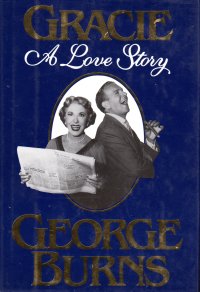 I can slot this book into the
I can slot this book into the 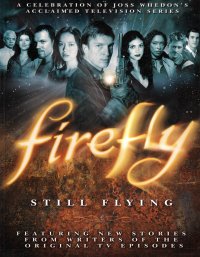 I bought this book, along with
I bought this book, along with 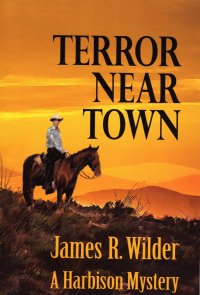 I got this book in June of last year at the author’s book signing at
I got this book in June of last year at the author’s book signing at 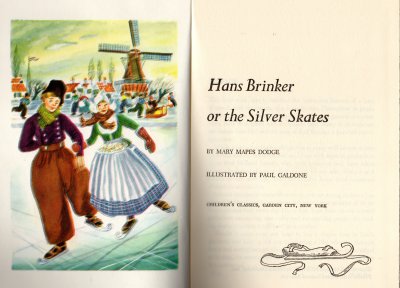 As with Laura Ingalls Wilder’s
As with Laura Ingalls Wilder’s 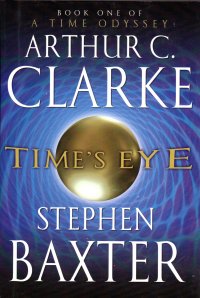 The
The 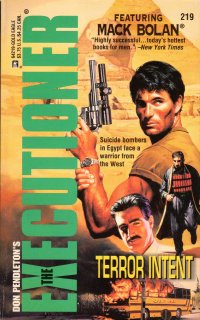 Well, my first book of the year–why not make it one of the less than a handful of Executioner novels I have left? Especially since they’re really now something to be finished rather than really enjoyed by the late 1990s, when they’ve bloated a bit and have kind of lost their roots and what made them most enjoyable at their best–the philosophical musings.
Well, my first book of the year–why not make it one of the less than a handful of Executioner novels I have left? Especially since they’re really now something to be finished rather than really enjoyed by the late 1990s, when they’ve bloated a bit and have kind of lost their roots and what made them most enjoyable at their best–the philosophical musings. When I bought this book
When I bought this book 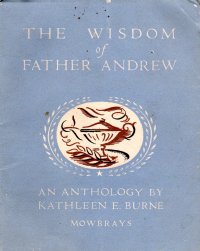 I must have gotten this pamphlet tucked into a pack of chapbooks bought from the Friends of the Springfield-Greene County. It is a mid-(twentieth)-century pamphlet, apparently one of six in the set, from Britain collecting the wisdom of Father Andrew, real name
I must have gotten this pamphlet tucked into a pack of chapbooks bought from the Friends of the Springfield-Greene County. It is a mid-(twentieth)-century pamphlet, apparently one of six in the set, from Britain collecting the wisdom of Father Andrew, real name  As you might remember, gentle reader, when I bought this book
As you might remember, gentle reader, when I bought this book  This book, the less expensive of the books by this author that I spotted at Hooked on Books
This book, the less expensive of the books by this author that I spotted at Hooked on Books  This hardback comes from Carleton Press, a self-publishing firm, in 1973. Not only is it a hardback in a dust jacket, but the dust jacket is Mylar-wrapped, so someone thought highly of it. Perhaps Ellen Massey, the teacher extraordinaire, to whom the book is inscribed.
This hardback comes from Carleton Press, a self-publishing firm, in 1973. Not only is it a hardback in a dust jacket, but the dust jacket is Mylar-wrapped, so someone thought highly of it. Perhaps Ellen Massey, the teacher extraordinaire, to whom the book is inscribed. Instead of some grandmother poetry, how about some grandpa poetry instead? Ah, but for the depth of grandmother poetry. This volume has 51 pages of landscapes with little beyond describing the flora of East Central Illinois. Many of the poems within are cinquains, which are short five line verses. Longer than a haiku, but not by much.
Instead of some grandmother poetry, how about some grandpa poetry instead? Ah, but for the depth of grandmother poetry. This volume has 51 pages of landscapes with little beyond describing the flora of East Central Illinois. Many of the poems within are cinquains, which are short five line verses. Longer than a haiku, but not by much.